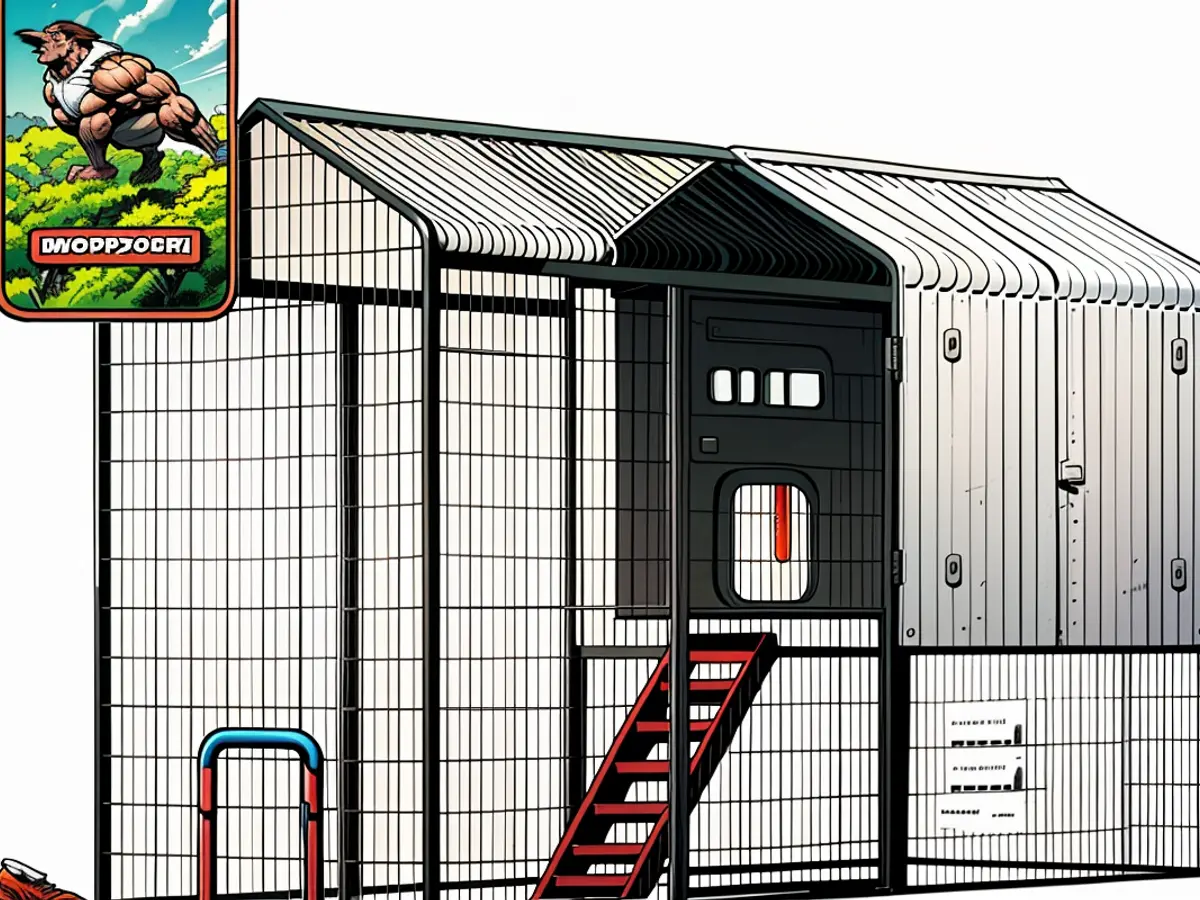How I Use Smart Tech to Help Raise My Backyard Chickens
While I’d long entertained the idea of raising a flock of chickens in my backyard, I knew it wouldn't be easy. Caring for living things takes a lot of work, and I need more on my to-do list like a chicken needs a xylophone (more on that later). But I was undeterred. From robot vacuums in my living room to programmable hoses in may garden, I use a lot of smart tech to make my life easier. I figured someone had to have cracked the code on automating at least part of the care and feeding of suburban fowl—and if they hadn’t, I could.
It turns out my thesis was both right and wrong. Yes, there is a lot of smart tech you can use to make chicken herding less cumbersome. But you're still dealing with living, breathing, clucking beings, and they’re always going to be both more expensive and more time consuming than you might think. On the other hand, they also can be pretty flocking delightful creatures to raise, and by using smart tech to do some of the heavy lifting, you can spend more time dispensing chicken cuddles and contemplating how you became a person who always carries around a can of dried worms.
Here’s how I used smart tech to "hack" my flock of four backyard chickens (Cacciatore, Marsala, Kiev, and Korma).

Just look at these adorable freeloading idiots: Marsala, Cacciatore, Korma and Kiev. Credit: Amanda Blum
Start with a smarter chicken coop
I’m handy and I have a Pinterest account, so I was well-positioned to build the coop of dreams in a weekend, but that involves actual work, and the point was to avoid that nonsense. Instead, I was only too happy to try out the Smart Coop.
Made of metal and pre-formed plastic, this wifi-enabled coop can be purchased with or without a run. It includes a door that can be programmed via an app to open and close at specific times (or at sunrise and sunset), with a number of preset options (close 20 minutes after sunset; close halfway then pause to as a last opportunity for a straggler to run inside; use latitude and longitude to determine sunrise/sunset, etc.) that give it far more functionality than your standard automatic coop door.
Once you dial in the settings that work for you, your chickens will quickly learn to go in on their own when it’s time. I only had to rescue poor Marsala a few times (because she is that chicken), and even that process is easier, because the app sends me an alert notifying me one of the girls didn't make it in the coop before the door closed.
Additionally, the Smart Coop has two wifi enabled cameras that watch the run and the coop. They use a proprietary surveillance algorithm called EggsteinAI to determine where your chickens are, if there are predators about and what kind, if there are eggs to be grabbed, and when the door opens and closes. Notifications are sent to your app or via text so you can react to them appropriately (for example, if you get a predator alert, you can send an SOS that turns on an alarm, activates a light, and shuts the coop door).
From the app, you can watch motion captures of your chickens to ensure they got into the coop at night, have figured out roosting, or are playing with their toys. Or you can watch them being little weirdoes (my IG stories are forever changed).

The Coop cameras work a lot like any other security camera, except that Eggstein AI looks for predators, eggs and keeps track of your chickens. Credit: courtesy of Smart Coop
Of course, you could simply install smart cameras in any old coop, and doors for coops that open and close automatically are nothing new. But the AI alerts have helped me stress less about what’s happening in the coop because I can more easily monitor it from afar. Unlike my chickens, I have a job; I can’t spend all day outside hanging with them. Plus, no matter what kind of relationship you have with your flock, your presence is always going to freak them out a little because, well, they’re chickens. Mine regard me as their one true leader, and the moment they see me, they stop being adorable and turn into excited idiots. Using a camera to check that they’re roosting, eating, or enjoying the vibes creates less disruption for everyone. I can now spy on how my dog interacts with the coop, and see what local wildlife has become interested in them too, without triggering the observer effect. (Having an easy way to share clips of my chickens' exploits with the world is just a bonus.)
Smart Coop also sells accessories to make coop keeping easier, from coop liners so cleaning the coop is roughly the same as cleaning your litter box, solar panels for the cameras and weather covers for the coop. The coop and run are built like a tank, it’s not going anywhere. The coop itself is highly secure so the chickens are safe at night, in a way that any wood coop I’d have built wouldn’t be. The double walled plastic is completely sealed around, except for the vents which allow airflow, and all the doors feature locks. Coop has in app support and a community tab that will connect you to other chicken and duck owners. Honestly, I was pretty impressed.
The Smart Coop$1,695.00at Coop


$1,695.00at Coop
Install sensors that are smarter than the chickens (which won’t be hard)
As useful and full-featured as it is, the Smart Coop does not monitor temperature in the coop or run, and within a week or two of moving my sweet dumb chicks outside, my city was dealing with a heat dome and temperatures soaring over 100 degrees. While chickens don’t usually require temperature controls, they are susceptible to high heat, so I wanted to find ways to cool them off.
Monitor temperature
I installed Aqara temperature and humidity sensors—one in their coop (which is essentially a big plastic box, so it gets hot at night when they’re all sealed in there), and one in the run. I now get real time alerts when temps exceed a certain threshold, so I can choose to take action. I can also use the sensors to trigger automations: I set up a Dreo smart fan in the coop that turns on when the temps go above 80 degrees. (It turns out chickens love a breeze.) This automation was simple to set up, as the sensor and the fan will both integrate with most smart hubs.

I keep check of the chicken's temperature and humidity inside the coop and run using sensors. Credit: Aqara app
Get water alerts
Part of my fowl learning curve was discovering the astounding amount of water four chickens can down in a day. I didn’t want to have to check or top up the water every single day, so I installed a water sensor. While a water leak sensor usually tells you when unwanted water is present, the YoLink water level float sensor tells you when the water sinks below an acceptable level. I next connected an emitter from my existing smart drip irrigation system to the chickens’ watering station so that when the sensor says it needs water, the smart irrigation kicks on, refilling the waterer for me. It's supremely satisfying every time.
Monitor their feed
I’ve yet to find a dedicated wireless light sensor to control the lighting in the coop, but most motion sensors have them. I chucked an Eve motion sensor into the bottom of the chickens’ food dispenser. As they eat, they eventually uncover the sensor, exposing it to light, and I get an alert so I know it’s time to add feed. (My deliveries of food are automated via Chewy to arrive every few weeks.)
Use smart tech to train your chickens
Let me preface this by noting that I am probably more concerned with my chickens' extracurricular activities than most people: I’ve installed a swing, a bridge, a mirror, and that aforementioned xylophone in their pen, even thought they mostly just want to stand in front of the fan impersonating Beach Ken. That said, what I want is for the chicks to crave is my approval. The solution involves dispensing treats when they do what I want them to do.
For this, I turned to the Switchbot bot. This is a tiny articulating finger that you can use to turn on a switch or punch a button. I use it to activate a treat dispenser when my chickens peck a corresponding Switchbot button. Hilarity ensues. (I am also considering installing the dog treat dispenser that my dog couldn’t figure out; I think the chickens could, though I’m not sure what that says about my dog.)
I hope all of this doesn't suggest that I use smart tech to ignore my chickens. Far from it: Removing some of the more mundane tasks has given me more time to enjoy the little buggers. I still check in on them daily, usually in early evening, to offer attention and hugs before bedtime (listen, Cacciatore is a highly sensitive chicken). I also use that time to double check all my systems and ensure everything is online and working.
There’s plenty about raising chickens that can’t be automated, like cleaning out treat trays, changing out the shavings, and refilling grit and dirt bath stations. Automating what I can has helped me actually enjoy managing my little flock.
Using the Smart Coop's app alerts, I can now monitor my chickens' activities remotely, reducing the need for constant physical presence. This allows me to spend more time dispensing chicken cuddles and less time worrying about their safety.
With the Aqara temperature and humidity sensors installed in the coop and run, I receive real-time alerts when temperatures exceed certain thresholds, ensuring my backyard chickens stay comfortable regardless of the weather conditions.








